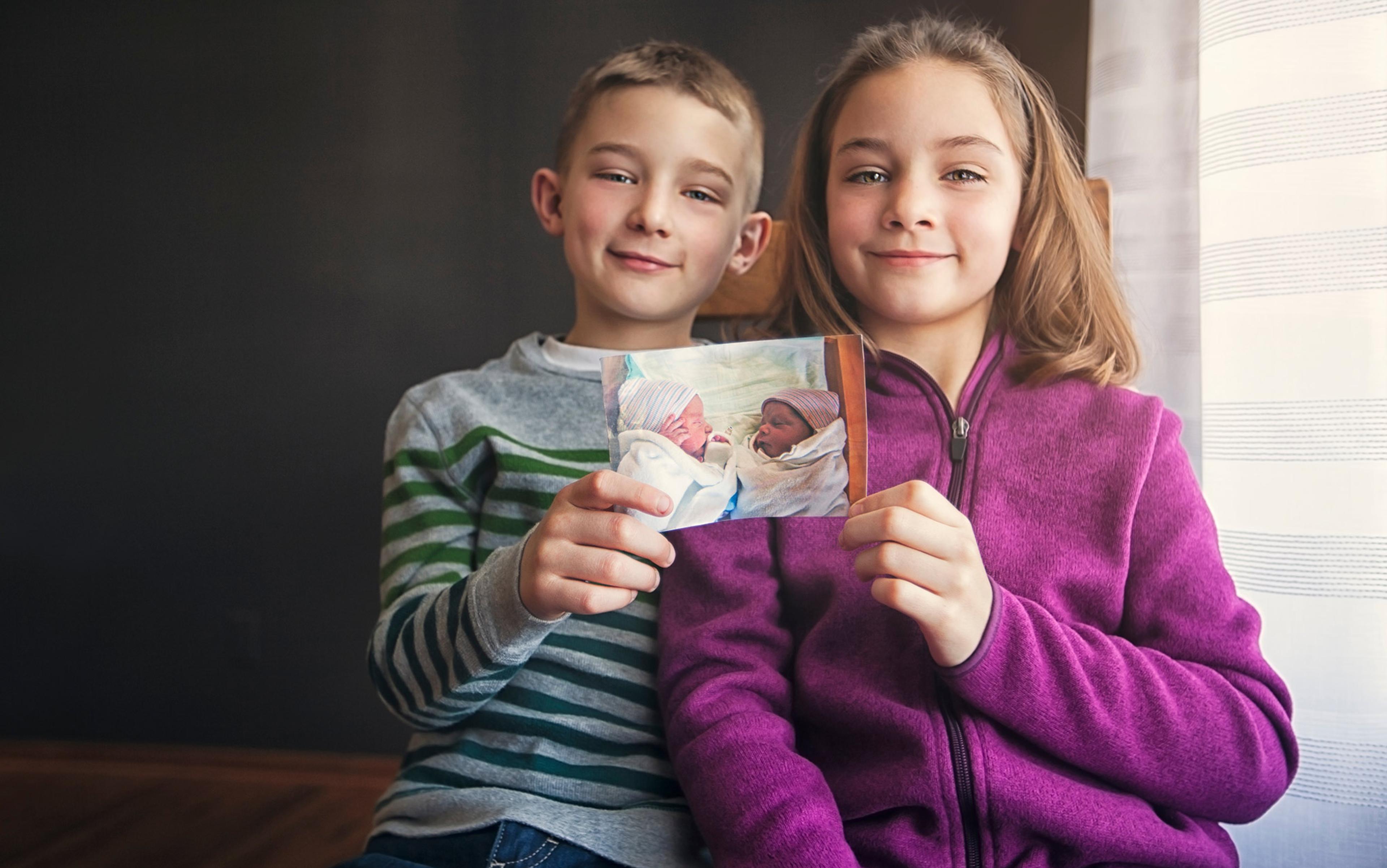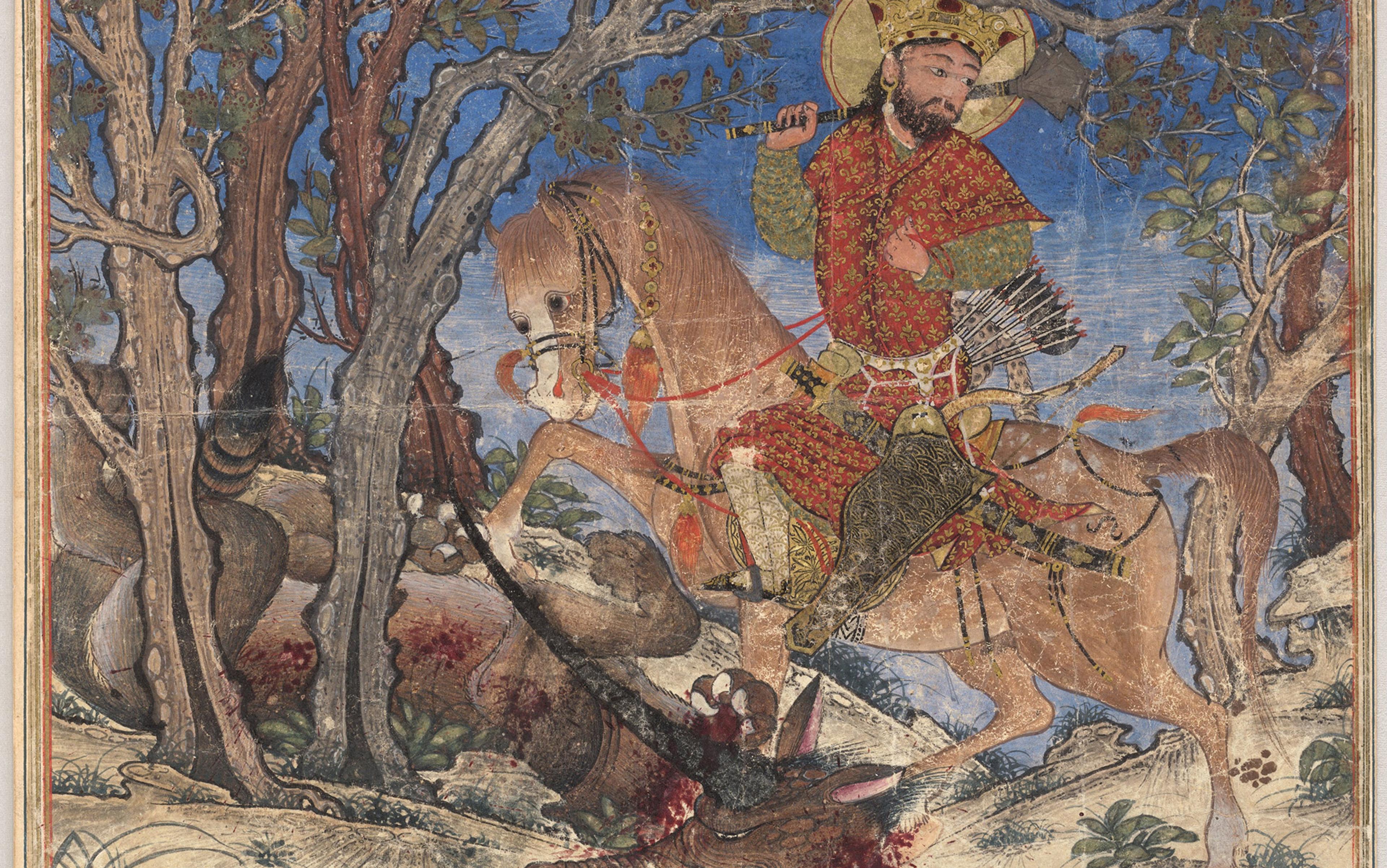In Greek mythology, twins Castor and Pollux are so tightly bound that when mortal Castor dies, divine Pollux surrenders half his immortality to stay with him, and the pair are transformed into the constellation Gemini. In a modern reversal of the myth, twin astronauts Scott and Mark Kelly were reunited in March after Scott returned from a year’s stint on the International Space Station – an event eagerly awaited by medical researchers who saw their chance to conduct tests on the twins to assess the effects of space on the human body.
Twins are very much in our consciousness at the moment, not just because they’re pushing the final frontier, but because we are living through a twin boom. A higher proportion of human beings are twins than at any other time in living memory. This may not be obvious to the naked eye – the vast majority of twins are fraternal, or non-identical, meaning they are no more similar, on average, than siblings who aren’t twins – but we’re aware of them nonetheless, in our neonatal wards and classrooms, on our sports fields and social networks. One group of people that has paid special attention to the current boom is demographers. That’s because, for the first time in history, they find themselves in a position to measure the boom and investigate its causes.
By the middle of the 20th century, all developed countries and a good number of less developed ones had begun to gather birth statistics systematically, and to record the births of multiples, making international comparisons possible. The most comprehensive global picture of the twin boom, comprising data from 32 countries, was published last December by a trio of European investigators. It confirms that the phenomenon is global, but reveals that it has played out differently in different countries. In doing so, it has fleshed out an idea that was floated over a decade ago: not only are we alert to twins, but they are alert to us. To put it another way, the twinning rate is a highly sensitive indicator of biological and social change.
That is a radical notion, because for a long time researchers assumed that the twinning rate was a constant of Homo sapiens biology. The gathering trickle of data, however, has unhinged that assumption. Take France, where the proportion of live births that were twins hovered around the 10 per 1000 mark for much of the 20th century. Birth statistics exist in France from as far back as 1700, and when Gilles Pison, a demographer at the Musée de l’Homme and the National Institute of Demographic Studies in Paris, started to look at them, he made a startling discovery. With his colleague Nadège Couvert, he found that the twinning rate had undergone some dramatic swings over the last few centuries. Around 1720, it was up around 15 per 1000 births – a level it wouldn’t reach again until 2000. By 1800, it had plunged to almost half that – fewer than nine per 1000 – and the next time it would fall so low was around 1970. What was going on?
One thing was immediately clear: the variation all sprang from dizygotic or non-identical twins. Monozygotic or identical twins derive from a single egg fertilised by a single sperm that splits early in gestation, while non-identical twins derive from two eggs that are fertilised by two separate sperm and implanted in the womb at the same time. They are quite different biological phenomena, and as such, subject to different laws. The monozygotic twinning rate is stable at around four per 1000 births – a rate seen in all mammals with the exception of the clade oddity, armadillos (whose offspring are monozygotic quadruplets or octuplets). All women seem to be at roughly equal risk for identical twins, making them a kind of genetic one-off. Non-identical twins, on the other hand, run in families. They are more common in some parts of the world than others, reflecting genetic influences on hormones that cluster in populations. They become more likely with increasing birth order – that is, later in a ‘litter’. And their incidence is exquisitely sensitive to a mother’s age.
A mother’s age was, in fact, the biggest single determinant of the twinning rate for most of the human story. While female fertility starts to fall off steeply in the early 30s, a woman’s risk of having fraternal twins increases linearly from puberty to age 38. That’s because blood levels of follicle-stimulating hormone – the hormone that triggers ovulation – increase with age, in turn increasing the likelihood that more than one egg will be released in a given cycle (the chances of more than two eggs being released are tiny, however; twins are by far the most common type of multiple birth). Around 38, the overall decline in fertility becomes the stronger of the two effects, causing the incidence of fraternal twins to fall off again.
The early French data are sketchy and to some extent unreliable. Infant mortality was much higher in the 18th century, for example, and stillbirths may not always have been recorded. They also derive exclusively from rural populations, though this is less of a problem since 85 per cent of the French population was rural at the time. Despite these caveats, Pison thinks they reflect the forces shaping families back then. In the early 18th century, French women had their children relatively late, because marriage had to wait until a couple could afford to establish themselves independently. Families were also big, producing five or six children, on average, and both these factors favoured twins. The revolution at the end of that century led to a relaxation of traditional family values and the widespread though illicit use of birth control (mainly the withdrawal method). Mothers became younger and families shrank – a trend that didn’t become visible in Britain, by contrast, until the end of the 19th century.
the twin boom has put the brakes on a longer-term, global trend towards lower infant mortality
Following the French curve into the 20th century reveals still more unexpected gems. France saw a massive spike in twins in 1919, just after the First World War. Pison thinks two factors contributed to this. Firstly, the war put reproduction on hold for many couples, so that women tended to be older than the norm for the period when they finally became mothers. Secondly, a selection effect was at work, whereby the most fertile couples were the first to conceive once the men returned home. Since the most fertile are, by definition, also the most likely to produce a multiple birth, the twinning rate soared in that first year of peace. Something similar happened after the Second World War, especially in the United States and Australia, where men were separated from their wives and fiancées for even longer stretches than in Europe.
In the decades after the Second World War, most industrialised countries saw a slow decline in their twinning rates, which bottomed out at around nine per 1000 in the early ’70s. The reasons overlapped with those seen 200 years earlier in revolutionary France: a loosening of mores, sometimes called the sexual revolution, and increasing elasticity in notions of family. There were differences, however. The pill played its part this time, though it interacted in complex ways with the new feminism: while married women used the pill to limit and space their pregnancies, the proportion of babies born to unmarried women grew – in part because single mothers were less frowned upon, in part because men relinquished responsibility for contraception to women. Overall, the effect was that families shrank and first-time mothers became younger again.
These were the baby boom years, but twins were rare. The current twin boom didn’t take off until the ’70s, with the advent of assisted reproductive technology (ART) – the umbrella term for fertility treatments that collectively boost the twinning rate by increasing the chances that more than one embryo will be implanted at a time. Over the same period, partly because of women’s massive incursion into the workplace, mothers got older again. The twinning rate doubled in only 40 years, to 15 or more per 1000 across the industrialised world. Today, in Europe and America, roughly every 60th person is a twin.
To understand the impact of ART on twinning, it helps to take a step back and look at pre-ART twinning rates across the globe. Already, a few decades before the ’70s, there were enough data to show that these vary from country to country. The ‘natural’ twinning rate in the US is slightly higher than that in France, for example, which in turn is higher than that in Japan. Some of the lowest rates in the world are found in Asia, while the highest occur in a band across Central Africa. Benin, the twinning champion of the world, boasts an extraordinary 28 twins per 1000 births. It has been suggested that the high Central African rates have something to do with local diets, and in particular with a chemical found in yams, but the fact that descendants of Central Africans who were born and raised in other parts of the world also have high twinning rates, suggests that the causes are more likely to be genetic.
Twins possess a highly developed theory of the other’s mind and an ability to work together that surpasses that of any other human dyad
Against that backdrop, the recent 32-country analysis published by Pison and sociologists Christiaan Monden of the University of Oxford in the UK, and Jeroen Smits of the Nijmegen School of Management in the Netherlands, allows a comparison of the evolution of the twin boom across the globe – and of the factors that have shaped it in each country. The two main factors are ART and maternal age, and the researchers made an attempt to disentangle the effects of these. They did so by calculating what the increase in twinning rates would have been, had the age distribution of mothers held at 1970 levels, and comparing that to what they actually observed. They found that, overall, the effect of ART in driving the boom has been about three times as important as that of rising maternal age (remarkably, ART even seems to have boosted the identical twinning rate slightly, though exactly how or why is not clear). Once again, however, there is variation between countries – this time reflecting cultural differences. In Japan, for example, the boom has been ten parts ART to one part older mothers, whereas in Catholic Poland, where ART is not popular, a mother’s age is by far the dominant factor.
The trend towards older mothers is global. Already well-established in the developed world, it is becoming increasingly visible in less developed countries too, whereas ART remains the preserve of the wealthy. In sub-Saharan Africa, for example, having a baby – let alone twins – is still so dangerous for both infant and mother that undergoing ART is a risk not worth taking, even if it were widely available or affordable. Overall, Pison says, it looks as if the rest of the world is converging towards the level that Benin achieves naturally, and some countries have already come close. Greece and Denmark had broken through the 20 per 1000 barrier by 2010, for example. Whether they will reach 28 per 1000 is a moot point, however, since there are indications that the boom is slowing down. In some parts of the world, such as Hong Kong, the twinning rate is still growing fast, but in others it has plateaued or even gone into decline. The latter is true in the Netherlands and Norway, for example, while in France and the US, though it might be too early to tell, it appears to be levelling off.
Why the slowdown? One contributing factor might be a change in medical attitudes towards ART, that reflects better knowledge of the risks associated with multiple births. Twins are more likely to be born prematurely and to have lower weight and complications at birth than singletons, and there is now good evidence that these things are associated with health problems later in life. Their risk of dying in their first year, though small, is on average four times higher than that of singletons, meaning that the twin boom has put the brakes on a longer-term, global trend towards lower infant mortality. For all of these reasons, plus the added expense of two babies instead of one, twins take their toll on families. Mothers of twins are twice as likely to develop post-natal depression as mothers of singletons, and twin parents have a higher risk of divorce too.
Starting around the year 2000, some governments – notably those of northern European countries, Australia, Japan and the US – began to promote a ‘one-at-a-time’ policy, advising doctors dispensing in vitro fertilisation (IVF) to return no more than one embryo to a woman’s womb. By then, advances in IVF technology meant that returning more than one was harder to justify anyway. In the ’80s, there was no way of knowing which was the healthiest embryo in a batch, so doctors put back several in the hope that at least one would ‘take’, and couples accepted the risk of a multiple birth. By 2000, thanks in part to new screening techniques, it had become possible to select the healthiest embryo. The one-at-a-time policy is legally enforced in some countries, but only a guideline in others, which may help explain why the boom seems to be petering out faster in some than in others.
So what of the future? If we have learned anything from the realisation that the twinning rate is a barometer of change, it is that the story doesn’t end here. There have been twin booms before, and there will be twin booms again. We might even be able to predict them, to some extent, given that we now know many of the conditions that favour them. If fertility treatments become more affordable, and neonatal healthcare improves, sub-Saharan Africa might see a ART-fuelled boom, for example, while the Chinese twinning rate is likely to increase as the one-child (per family) policy is phased out, and more and more Chinese people are lifted out of poverty.
Before we exit this particular boom, however, we should pause to meditate on how twins have contributed to the modern world, and in particular to our understanding of what it means to be human. They undoubtedly impose a strain on society, as parents and the staff of neonatal wards can attest. But as Nancy Segal, director of the Twin Studies Center at the California State University, Fullerton (and a twin herself), points out, twins also bring some unique and valuable attributes to the human party – in the best instances, absolute mutual trust, a highly developed theory of the other’s mind, and an ability to work together that surpasses that of any other human dyad.
Of more relevance to the non-twins among us is what twins have revealed to us about ourselves, since for the last 150 years twin studies have provided one of the most powerful tools available for probing the roots of human behaviour. In such a study, monozygotic and dizygotic twins are compared to try to disentangle the relative contributions of genes and environment to everything from personality to intelligence to physical prowess and mental health. To give a recent example, a study published in May found that twins have a higher likelihood than non-twins of surviving into their 60s – an effect that is stronger in identical twins than in non-identical ones. As a possible explanation, the authors suggest that the deep bond between twins buffers them from life’s stresses – thus bolstering the idea that we might enhance quality of life for seniors in general by helping them to cultivate and maintain their social networks.
In the ’50s, just before the current boom took off, human behaviour was considered to be shaped almost exclusively by the environment. Now, thanks to twin studies, it’s not possible to think about behaviour without invoking at least some genetic contribution – and that psychological shift has had practical consequences. In her book, Entwined Lives (1999) Segal gives the examples of mathematical skill, social non-conformity and weight gain, all of which are now recognised to be at least partly under genetic control. Realising that, she wrote, has been ‘the key to informed appreciation of individual diversity in response to teaching methods, political events and dietary practices’. Such insights may go some way to explaining our enduring fascination with twins. Like Narcissus gazing into the pool, when we gaze at them, we are not so much seeing double, as seeing ourselves.






